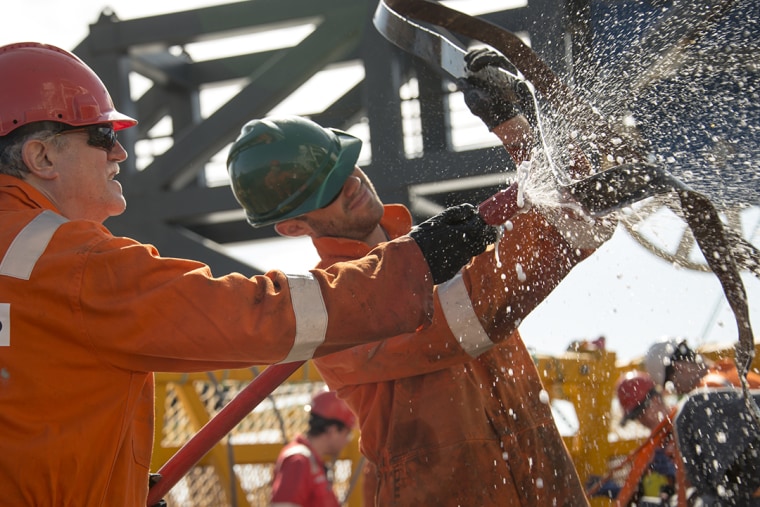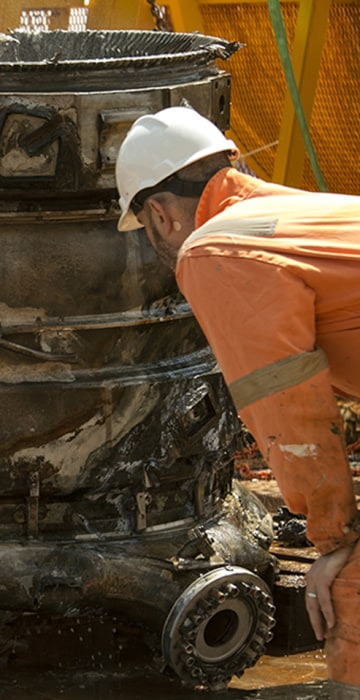
Science News
Moon rocket engines recovered
Click through scenes from Bezos Expeditions' recovery of historic Saturn 5 rocket engines from the Atlantic Ocean floor.
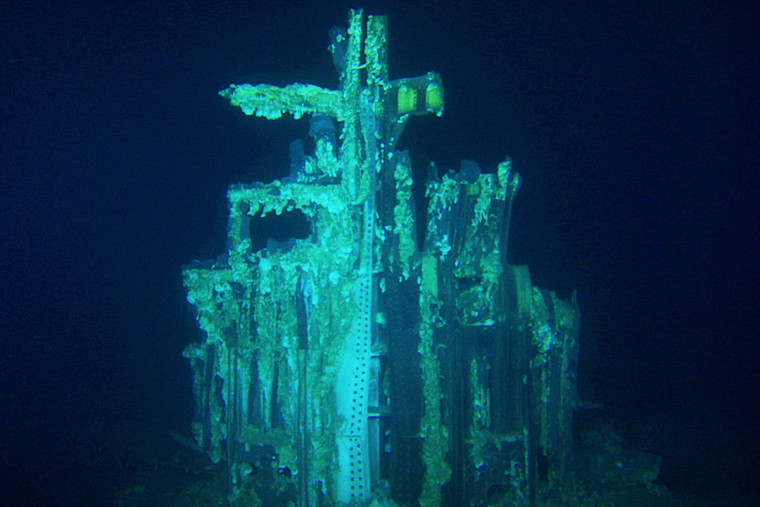
A Saturn 5's skeleton
Salvagers backed by Amazon.com billionaire Jeff Bezos have recovered components from the Apollo moon program's F-1 rocket engines - historic artifacts that sat at the bottom of the Atlantic Ocean for decades. Remotely operated vehicles played a key role in the operation. This ROV snapshot shows the structure of the Saturn 5 rocket's first stage.
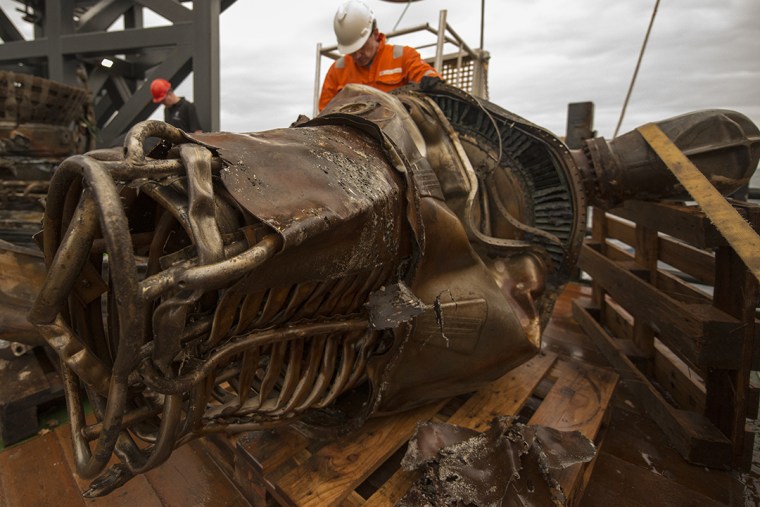
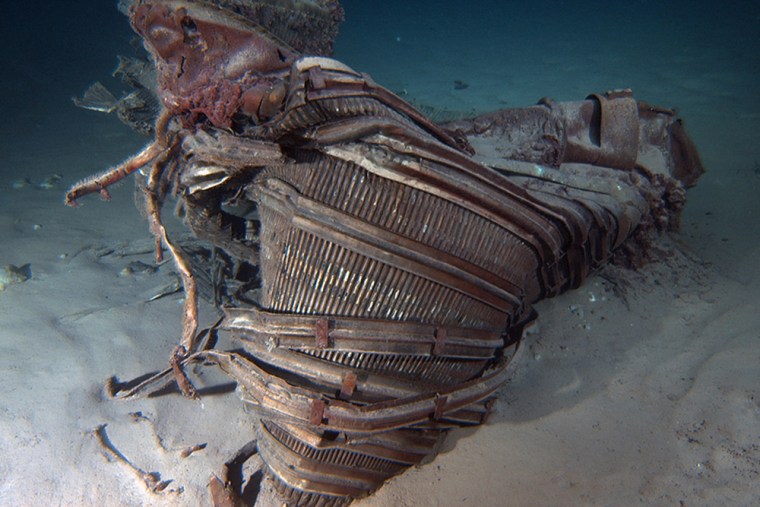
Engine nozzle
A crumpled rocket engine nozzle lies on the ocean floor. The Saturn 5's first stage fired its engines for two and a half minutes after launch, and then was jettisoned to let the second stage take over during ascent. The first stage fell through the atmosphere at speeds of up to 5,000 mph and plunged into the Atlantic.
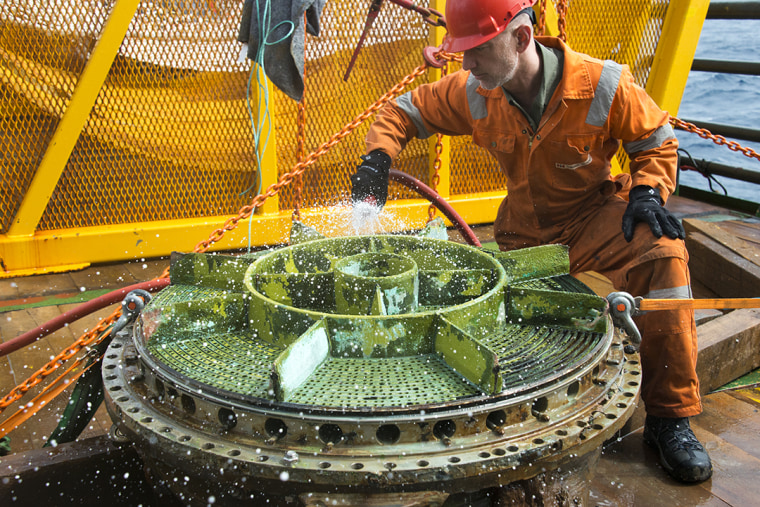
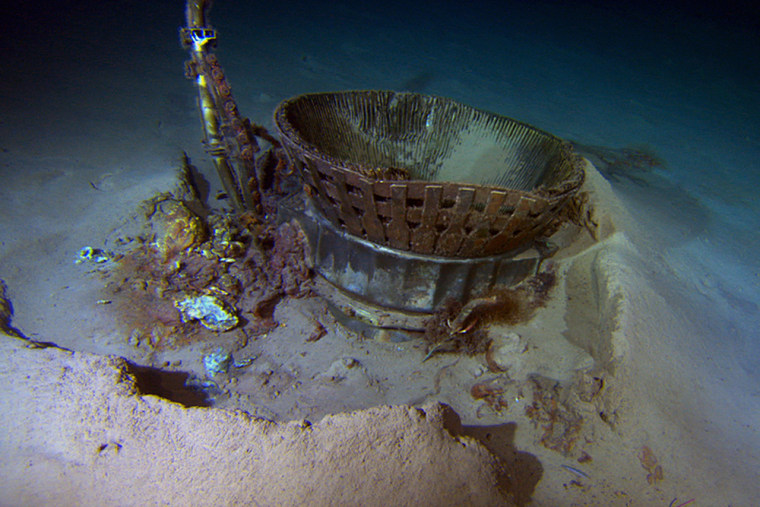
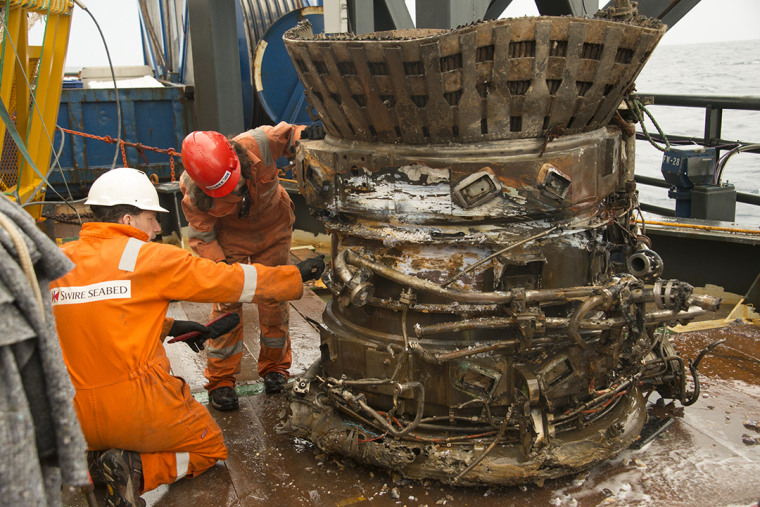
Thrust chamber on deck
Salvage workers check out the thrust chamber from an F-1 rocket engine aboard the Seabed Worker. "Each piece we bring on deck conjures for me the thousands of engineers who worked together back then to do what for all time had been thought surely impossible," Jeff Bezos says.
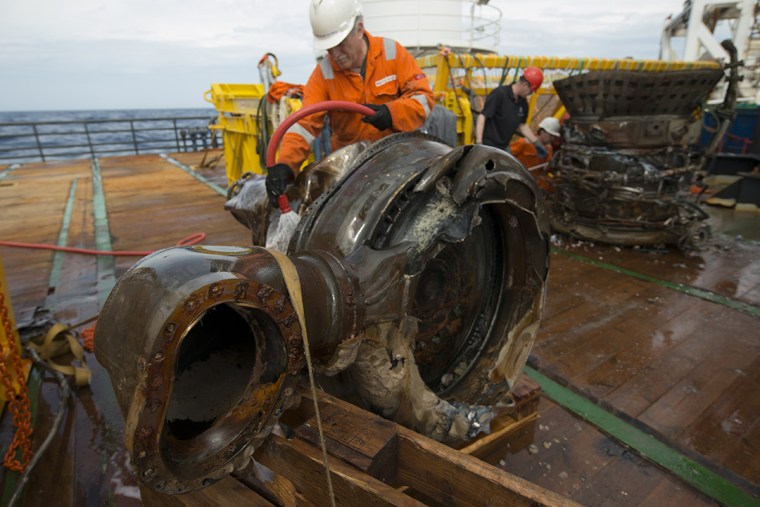

Engine turbine
The turbine for an F-1 rocket engine sits on the Seabed Worker's deck. Each of the Saturn 5 rocket's first-stage engines stood 19 feet tall by 12 feet wide and weighed over 18,000 pounds. Five of the engines generated the 7.5 million pounds of thrust needed to lift the Saturn 5 and its Apollo crew off the launch pad.
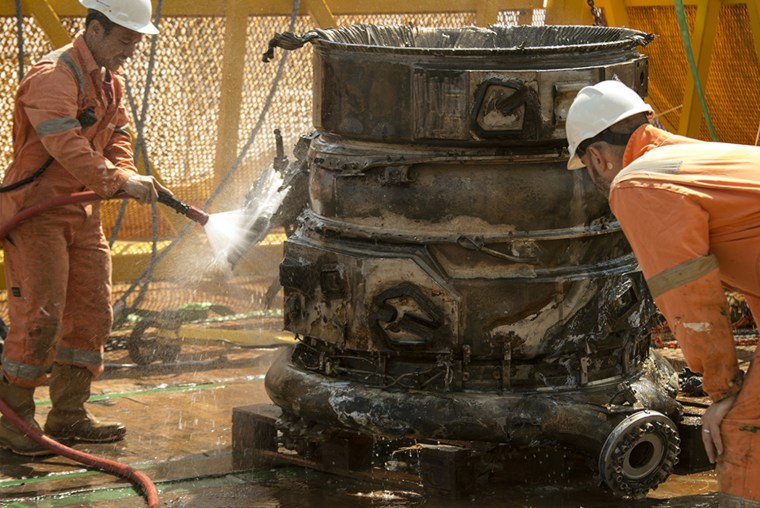
Thrust chamber and fuel manifold
Workers wash off the thrust chamber and fuel manifold from an F-1 rocket engine recovered from the Atlantic Ocean. After restoration, the engines are expected to be put on display at the Smithsonian Institution's National Air and Space Museum and the Seattle Museum of Flight as an inspiration for future generations.
